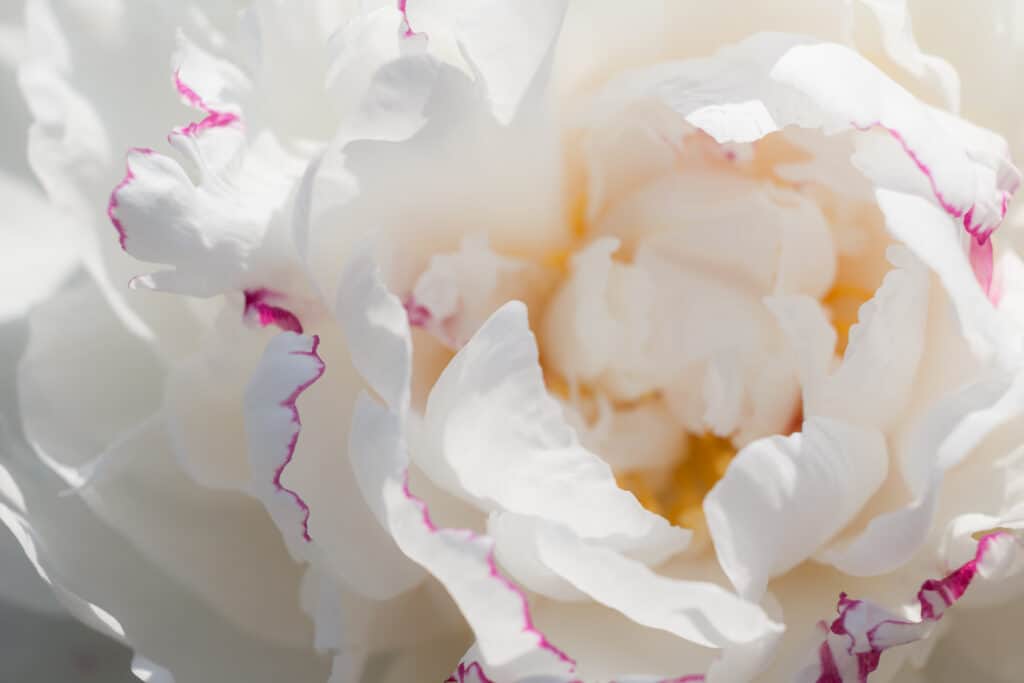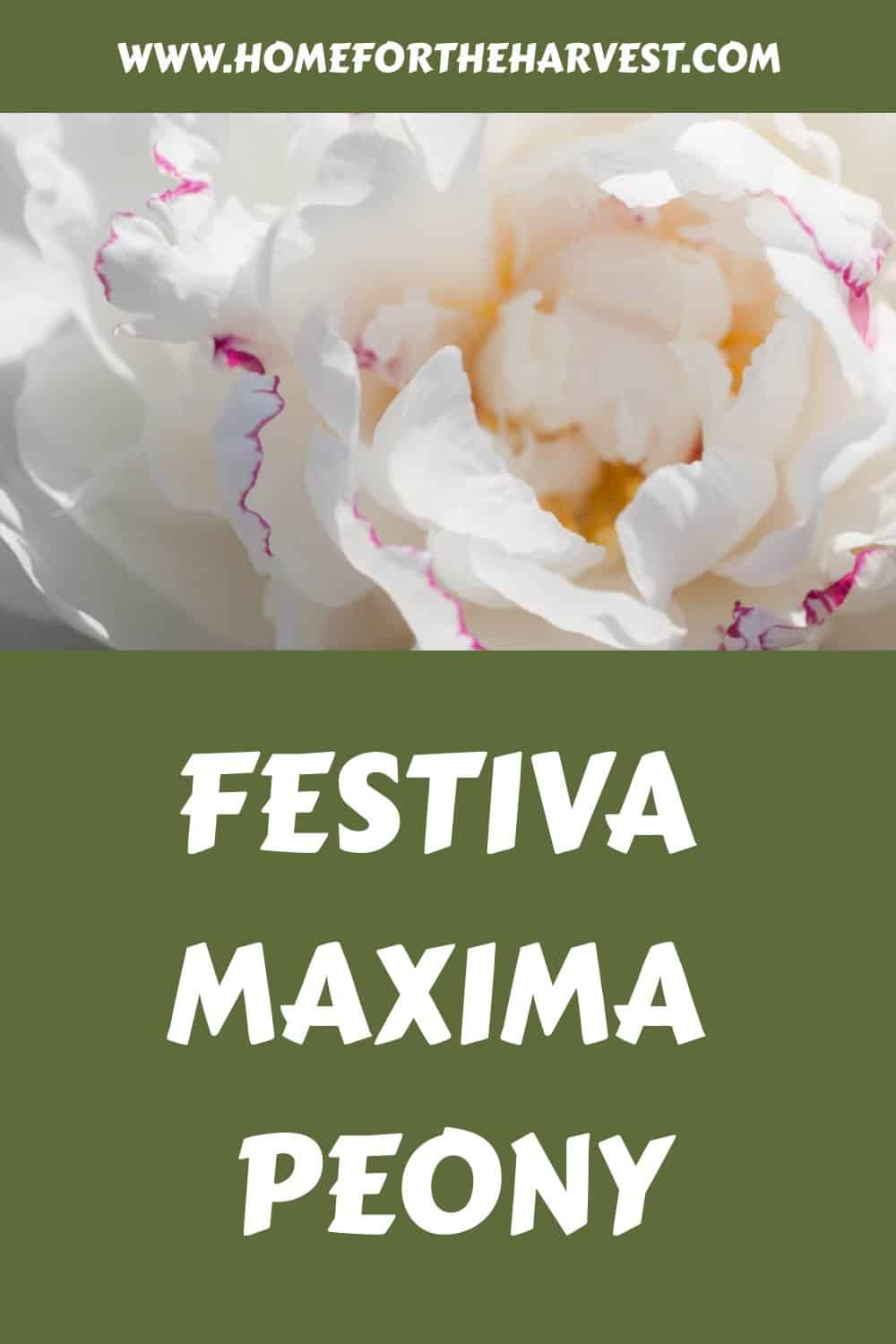The Festiva Maxima peony variety is a brilliant white double peony with delicate thin pink streaks. These herbaceous perennial plants grow to be between two and three feet tall, with ornamental deep green foliage. Festiva Maxima prefers full sun and plenty of moisture in the soil. Blooms on well-established plants can be up to seven inches wide at the peak of blooming.
Festiva Maxima peony basics
The Festiva Maxima peony has been gracing gardens for around a hundred and seventy years, with its first emergence being in 1851 as a hybrid cultivar of Paeonia lactiflora created by the French plant breeder Auguste Joseph Miellez. It received the Royal Horticultural Society’s Award of Garden Merit in 1993.
Festiva Maxima’s flowers are called “doubles,” as they have multiple layers of petals. These big, fluffy, puffball-like flowers are among the largest types of peony blooms (and certainly the heaviest!). Other types of double peonies include Karl Rosenfeld peony, Sarah Bernhardt peony, and Kansas peony.
The peony plant grows to be between two and three feet tall with a similar width. It has green foliage and boasts a magnificent white flower that grows to be between six and seven inches wide. This peony variety is set apart from other white peonies by the hot pink edges at the tip of the serrated petals. They look as if the petals have just barely brushed up against red-pink dye.
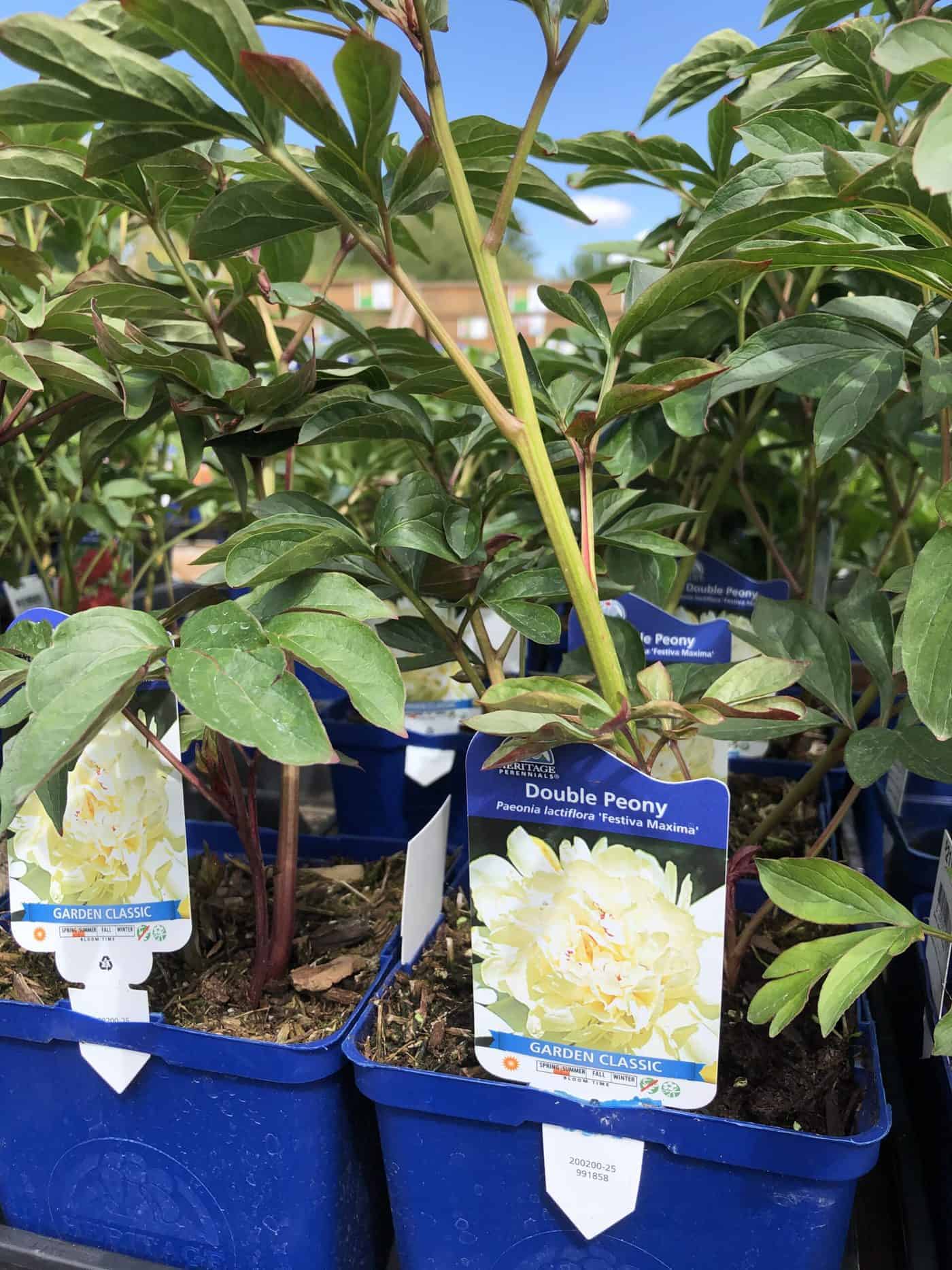
Classification
Festiva Maxima Peonies (Paeonia lactiflora ‘Festiva Maxima’) are herbaceous peonies with full double-type peony flowers that bloom early in peony growing season (typically mid to early spring).
Full double peonies are known for their voluminous layers of petals. In this flower type, all stamens and carpels are transformed into petals. Double peonies look like a flower inside a flower (hence the term “double”). Sometimes pollen-bearing stamens (often yellow) appear in a circle around the outside of the inner flower layer.
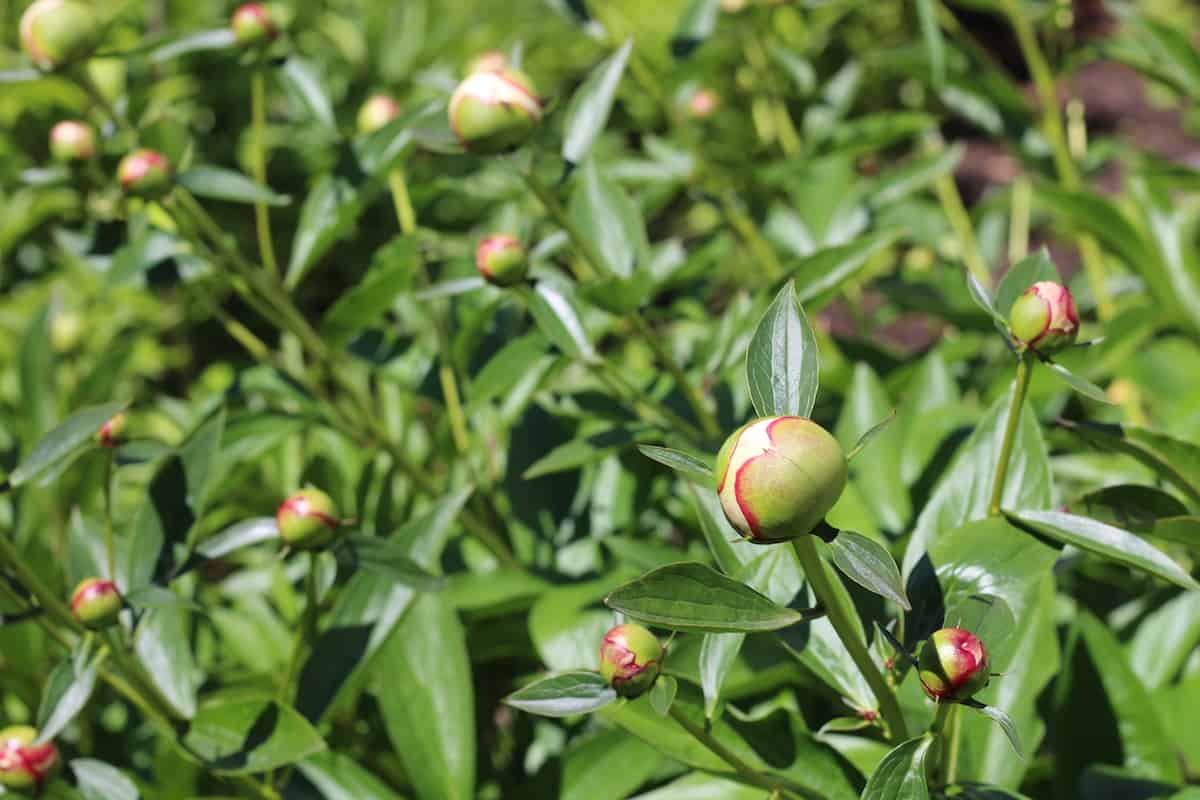
Planting peonies
Peonies are best planted in the spring or fall. Summer-planted peonies will need extra care and attention (in the form of increased watering) and can be more likely to die in their first year.
Peonies can grow in zones 3-8 of the United States. Festiva Maximas are a little more resistant to the heat than your average peony, and are a good choice for gardeners in zones 7-8.
Within your garden, the Festiva Maxima will want a spot with plenty of full sun and deep, loamy soil with good drainage. You can include other organic matter to increase the richness of the soil.
Like other peonies, it struggles to compete with trees, bushes, or shrubs, so be sure to plant it away from those. When planting more than one of them, plant them three to four feet away from each other for the best results.
These peonies thrive in soil that has a neutral PH, drains well, and is deep. If you have well-drained soil that is capable of growing plants without fertilizer, then there is no reason to use more than a tiny bit for these flowers.
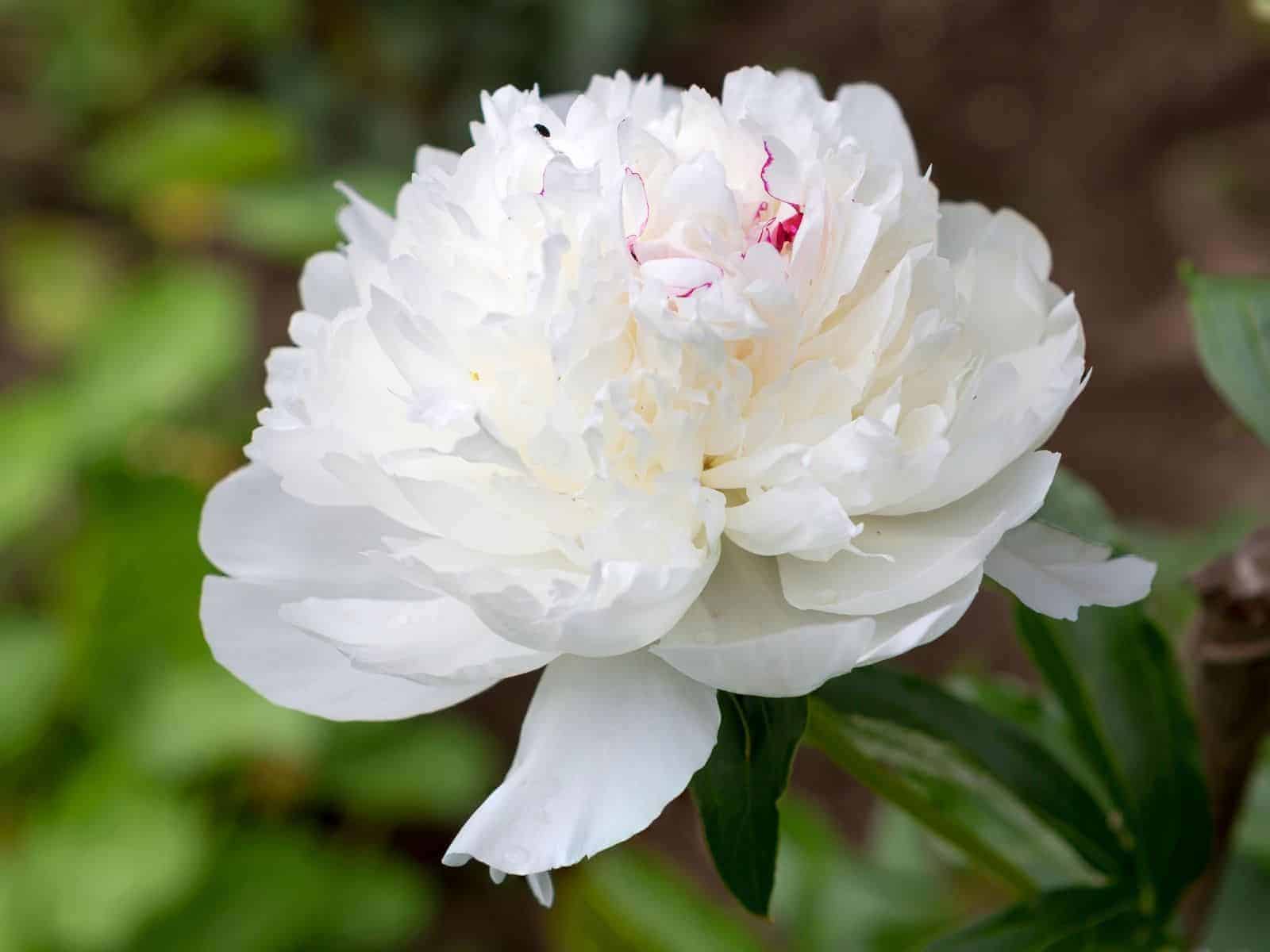
How to plant peonies
Most peonies are sold as bare roots. When planting bare-root peonies, you’ll want to start by digging a hole about a foot wide and a couple of feet deep. It needs to have enough space for root growth. At this point, you’ll want to mix your compost with the dirt.
Next, you’ll build a mound in the hole that peaks no less than two inches from the surface. This is where you will rest the root itself, with its eyes facing toward the opening of the hole.
Now push the soil back into the hole, being careful to ensure that the root doesn’t get pushed further than two inches beneath the surface. The eyes should only have about 1 inch of soil overtop of them. More than 2 inches of soil on top of the eyes can prevent blooming entirely.
Tamp the soil gently. Generously water the area and watch to ensure the water is draining down nicely into the soil. Top the areas with a bit of organic mulch.
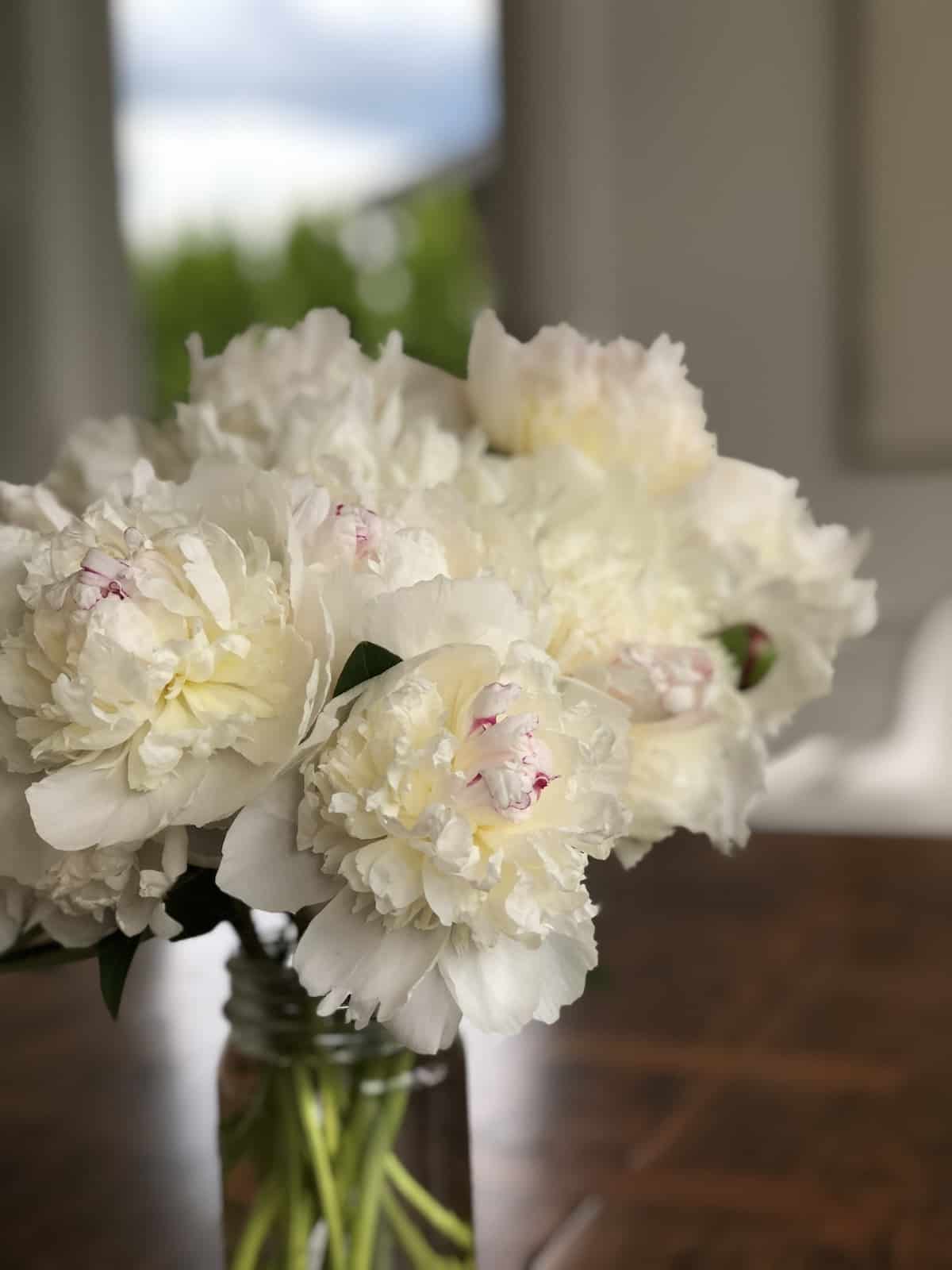
Ongoing care for peony plants
While peonies don’t need a lot of attention, giving them some kind of support for their stems is a good idea. This can be wooden stakes, metal peony circles, or even tomato cages. Peonies don’t mind metal, so don’t worry about that bothering them.
There’s no need to mulch them heavily, even in the winter. If you do decide to mulch them, light mulching will be fine. Peonies are very cold-hardy!
Along with trimming back dying blossoms, you should also trim the peony plant’s foliage to the ground level before each winter to protect it from overwintering.
Pests and disease
Fortunately, peonies aren’t vulnerable to many pests. Not only do they resist deer and rabbits, but they also have a symbiotic relationship with ants that protects them from things like slugs or aphids. They can, however, contract a variety of diseases if you aren’t careful with them.
Peonies are vulnerable to powdery mildew, which is rarely lethal but can make life much more difficult for them. The best way to prevent this is to keep them in the range of full sun and treat any signs of mildew immediately. Plenty of sunlight will help the peony plant grow healthily in the spring and suppress any fungus growing on it.
Many infections that peonies can suffer from require you to either remove the affected part of the plant to remove the plant altogether. Never leave dead plant foliage, stems, or roots in your garden!


